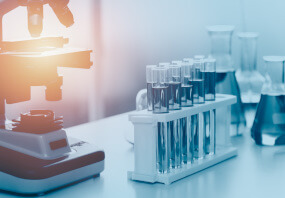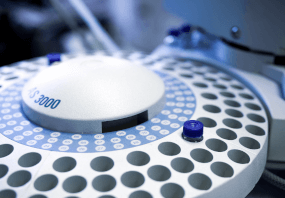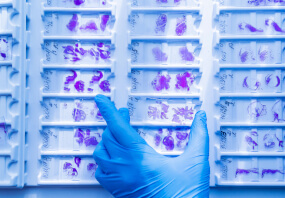InformationPhytosterols, also called plant sterols or stanol esters, are specialized compounds found in plants that are structurally similar to cholesterol found in humans.In vitroPlant sterols or phytosterols are structurally similar to cholesterol and exist in several forms in plants, including β-sitosterol, campesterol, stigmasterol and cycloartenol. Phytosterols can protect cells from damage by reactive oxygen species. Phytosterols can promote cell apoptosis. The incorporation of phytosterols into lipid rafts, altering their structure, may result in beneficial changes in signal transduction.In vivoPhytosterol and stanol (or phytosterols) consumption reduces intestinal cholesterol absorption, leading to decreased blood LDL-cholesterol levels and lowered cardiovascular disease risk. Recent studies suggest that phytosterols inhibit the production of carcinogens, cancer-cell growth, invasion and metastasis, and promote apoptosis of cancerous cells. Phytosterols occur naturally in plants either esterified with fatty acids in the cell membranes or in free form within the cells. After ingestion, phytosterols are emulsified by bile salts secreted into the small intestine to form micelles for digestion. After micelle formation, the esterified phytosterols are hydrolyzed to free phytosterols probably by cholesterol esterase and pancreatic lipase enzymes. Free phytosterols are then absorbed into enterocytes. In the enterocytes, these compounds become esterified to fatty acids by acyl-CoA cholesterol acyltransferases, and combined with cholesterol, triacylglycerol and apolipoproteins to form chylomicrons. The chylomicrons are secreted into the lymph and then transferred to the bloodstream, where they are transformed to chylomicron remnants after the uptake of triacylglycerol by cells and transported to the liver. In the liver, the phytosterols may either be used for synthesis of bile salts or be incorporated into very low-density lipoproteins and be secreted into the blood, from where they are converted to low-density lipoproteins and presented to cells for uptake. In the tissues, phytosterols are incorporated into the cell membranes and have been found to be highly concentrated in the lungs, adrenal cortex, intestinal epithelia and ovaries.
Specifictaions: Moligand™, ≥98%
PubChem CID: 12303662
Isomeric SMILES: CC[C@H](CC[C@@H](C)[C@H]1CCC2[C@@]1(CC[C@H]3[C@H]2CC=C4[C@@]3(CC[C@@H](C4)O)C)C)C(C)C
- UPC:
- 51172811
- Condition:
- New
- Availability:
- 5-10 days
- Weight:
- 1.06 Ounces
- HazmatClass:
- No
- WeightUOM:
- LB
- MPN:
- P413233-100mg
- CAS:
- 949109-75-5
- Product Size:
- 100mg












